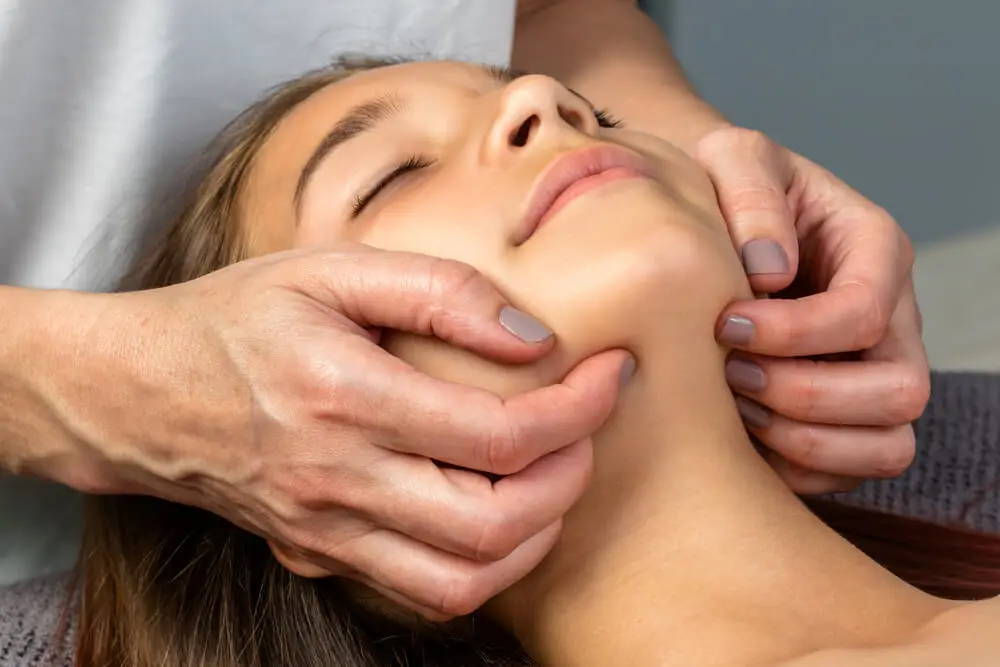
Do you ever notice your jaw feeling tight, sore, or even clicking when you open your mouth? You’re not alone. The temporomandibular joint (TMJ) is one of the most active joints in the body, allowing us to talk, chew and yawn. However, when it becomes dysfunctional, it can lead to temporomandibular orders (TMD) – conditions that cause pain, tension, headaches, clicking, restricted jaw movement and decreased function.
TMD can cause:
- Jaw pain and stiffness
- Headaches or facial pain
- Clicking or popping sounds in the jaw
- Ear pain or ringing (tinnitus)
- Difficulty chewing or opening the mouth fully
- Neck and shoulder tension
- Restricted jaw function and movement
The good news? Massage therapy offers effective, drug-free relief for TMD by addressing both the joint and the muscles that control it!
Why Massage Helps TMD
TMD is often linked to muscle tension, stress, clenching, and posture. When the muscles of the jaw and neck are tight, they can restrict movement, pull the joint out of balance, and create pain patterns that spread into the head, face, and shoulders.
Massage therapy helps by:
- Releasing tension in overworked muscles
- Decreasing headache intensity and frequency
- Improving circulation for faster healing
- Reducing stress and clenching habits
- Decreasing Trigger Points that refer pain patterns in the head, jaw, neck and face
- Restoring natural movement in the jaw and surrounding areas
Massage Techniques for TMD Relief
As massage therapists, we use a variety of techniques tailored to your unique presentation. These may include:
Myofascial Release
Fascia is a network of connective tissue that surrounds muscles, joints and organs. Gentle, sustained pressure on the fascia around the jaw, temples, and neck can ease restrictions, tightness and restore mobility and allow for more movement.
Myotonic/Active Release
Using an active range of motion (movement) while pinning or gliding through the muscle belly, this engages neurological involvement of the muscle to aid in decreasing tension, adhesions and “reset” overactive muscles to relax.
Proprioceptive Techniques
Sometimes our nervous system “forgets” how to relax. Proprioceptive techniques use gentle, 2 pounds of pressure on the tendon or muscle belly to retrain muscle awareness and function. It helps signal the fibres to relax, decreasing guarding and easing function.
Intra-Oral Massage
By working inside the mouth (with gloves), we can access deep muscles like the masseter and pterygoids, along with the deep temporalis attachments in the jaw, which are often the main culprits in jaw tension. Many patients find this technique provides significant relief.
Joint Mobilisations
The TMJ is meant to glide and rotate smoothly. Gentle mobilisations help restore this natural movement, increase joint fluid to circulate which reduces stiffness and improving function and movement.
Supporting Your Jaw Health at Home
Alongside massage therapy, you can take steps at home to manage TMD:
- Apply a warm compress to the jaw and neck to relax muscles
- Practice gentle stretching and relaxation techniques for the jaw
- Be mindful of clenching or grinding habits during the day
- Maintain ergonomic posture, especially when working at a desk
- Avoid chewing gum or hard foods that strain the joint
- Leaving a natural gap in the mouth (teeth shouldn’t be touching all the time)
- Self massage to extend relief in between appointments
- Remedial exercise to strengthen weak and/or opposing muscles for more balanced movement and function
If you’re experiencing jaw pain, discomfort, headaches or clicking in your jaw, Massage Therapy may help you find lasting relief. Book a session today and let’s support your health together.
- Danyon Nickerson, RMT











